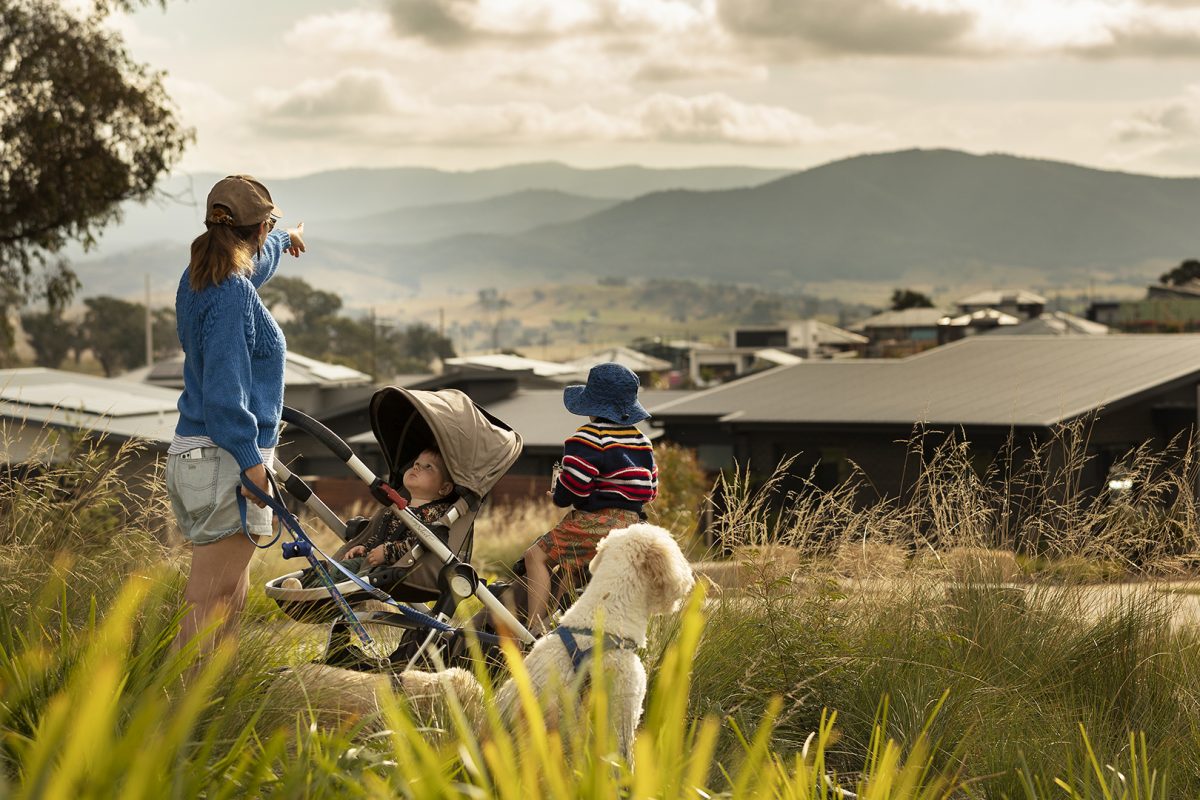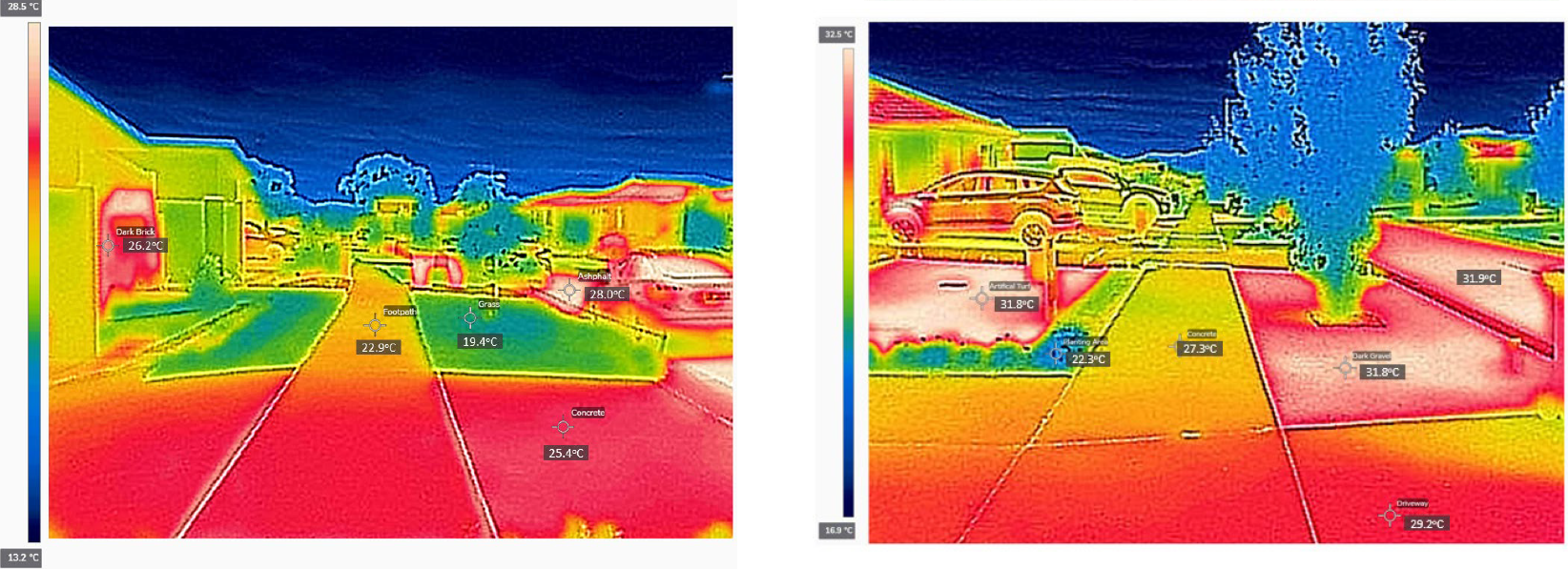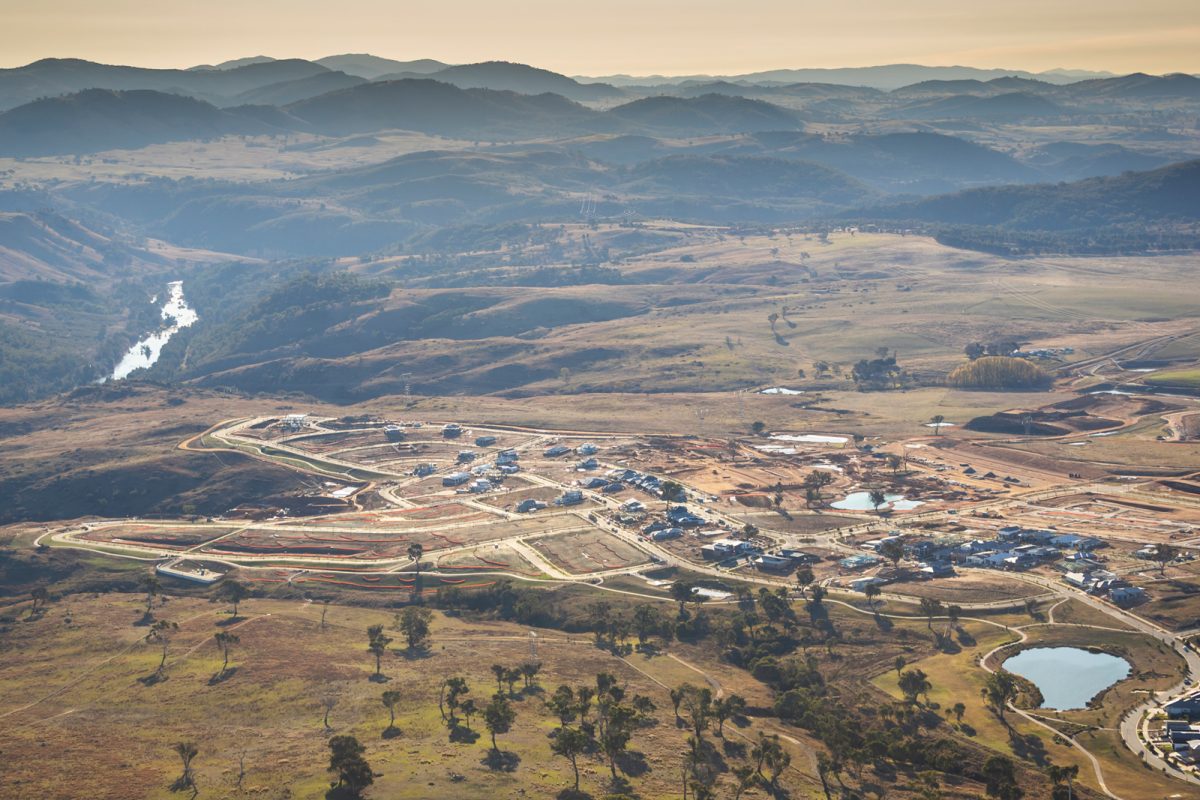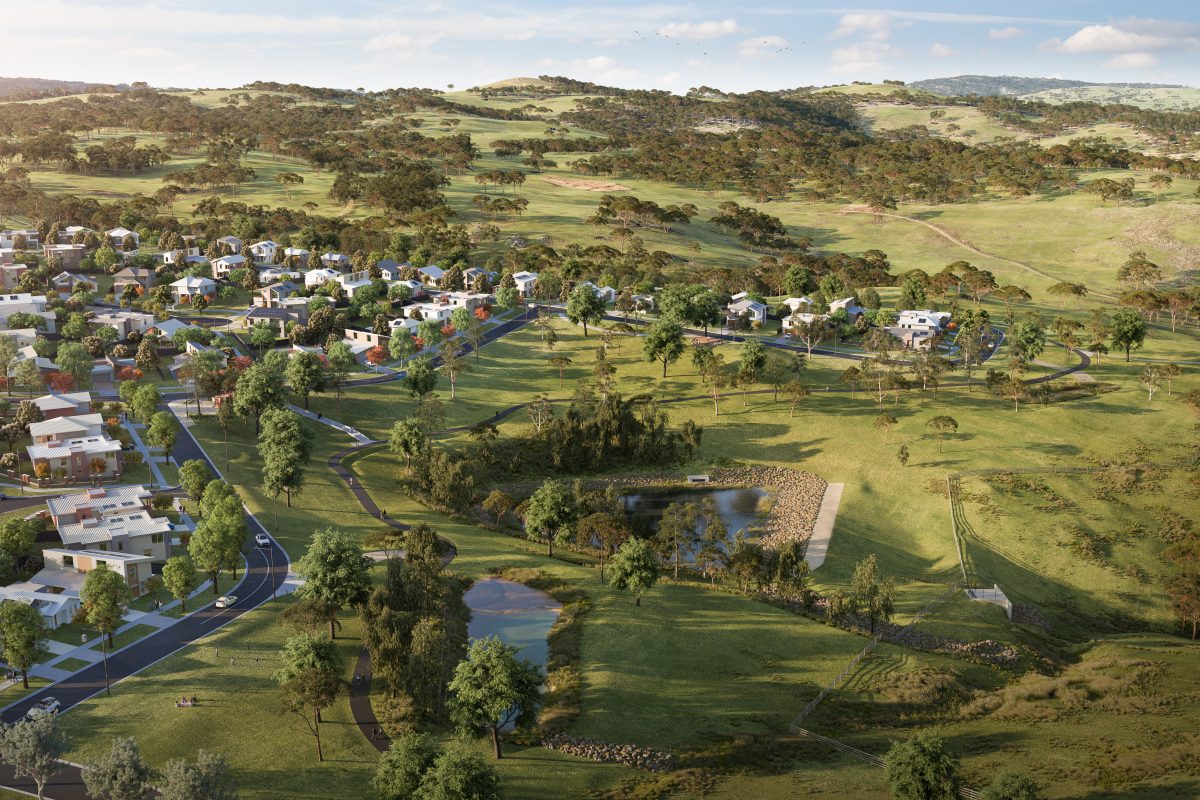Managing The Urban Heat Island Effect: How Ginninderry is working hard to keep us cool
From the very beginning, Ginninderry has been committed to creating social, economic and environmental benefits for its community through design, construction and thorough planning.
A vital element of any community is the homes the residents live in and ensuring they suit the climate. The Urban Heat Island Effect (UHIE) was an important consideration in Ginninderry’s planning phase to ensure its homes are well suited to Canberra’s climate.
But what exactly is the Urban Heat Island Effect? The term refers to the way pavements, roads and materials absorb the sun’s heat and radiate it back day and night, increasing the temperature and stopping urban areas from cooling down. In 2017 The CSIRO published a report commissioned by the ACT Government exploring its impact in Canberra. The report found that Canberra as a city is around 8oC warmer in summer and 6oC warmer in winter than its surrounding rural areas.
Areas with large expanses of impervious surfaces (such as rooftops, car parks and concreted areas) were much warmer again – sometimes up to 4-11oC hotter than the Canberra average! These sorts of surfaces are often found in commercial and industrial areas, along major roads and intersections and in new housing developments.
Here are the ways in which Ginninderry is working to minimise heat of both its homes and the streets they’re on during the warmer months.
ROOFING
The Ginninderry team requires home owners and designers to incorporate light-coloured roofs. This allows the heat to be reflected and not absorbed within houses. Recent studies have found residents can save up to $700 in electricity simply by having a lighter-coloured roof. Meanwhile, a darker roof will most likely see your electricity bill increase by up to 38 per cent.
LANDSCAPING
Landscaping is a vital strategy for mitigating UHIE. Ginninderry aims to retain 80% of existing trees, and has planted over 2,500 new trees as well as 62,000 shrubs throughout Strathnairn.
Ginninderry is also working with researchers from the Fenner School of Environment and Society at the Australian National University who are looking at how councils and urban developments can not only keep many of their old, mature trees, but also provide new growth, habitat and support for these trees over their lifetime and beyond. There are three tree treatments being examined which serve multiple functions: to increase biodiversity, provide habitat for the species who share Ginninderry’s suburbs, cool the surrounding environment and ensure there are new trees growing to one day, replace mature tree on the site.
Ginninderry offers free landscaping (conditions apply) to all purchasers to assist with not only finishing off the home, but to help with increasing biodviersity and cooling the environment around the home. From formal landscapes to edible gardens, purchasers will have a choice of 7 concept designs.
You can find a list of suggested plants on the website under the ‘building resources‘ page, including a list of native plants. By using native plants that better suit the Canberra climate, residents can help to preserve biodiversity by creating healthy ecosystems that can promote a cooler climate in summer, purify the air and help to maintain healthy soil.
Every purchaser of a brand new residential block of land in Canberra is also eligible for the Free Plant Issue Scheme.
The use of artificial turf was strongly discouraged in Strathnairn and will not be permitted in Macnamara. Artificial turf and hard surfaces such as bitumen, gravel and concrete only serve to intensify the UHIE.
Ginninderry’s Head of Sustainability & Community Development, Jessica Stewart, conducted an analysis to see how landscaping shapes our urban heat island. The analysis included a comparison of Fairbrother Street, Strathnairn and the next street over – Lorraway Street, Holt. The street in Ginninderry (Strathnairn) included footpaths on both sides of road, front landscaping packages provided (includes grass, trees, shrubs, soft landscaping and drip irrigation), and mandated turf on the verge, light coloured driveway and Housing Design Requirements. The street in Holt featured a footpath on one side of road only, narrower road width meaning more cars park on the verge, no additional design requirements (other than ACT Territory Plan), artificial grass in front landscapes and gravel among the verges. The result was the Ginninderry street being an average of 10oC cooler than Holt.
WATER
The water sensitive urban design of rain gardens, ponds and dams through the suburb also help to reduce Ginninderry’s UHIE. Water is a great cooler! Wind travelling across water cools down much faster than over grassland or hard surfaces. What’s more, areas like Paddys Park and Pro Hart Avenue which have large areas of grass are also irrigated, cooling them down even further!
The water that runs into the area’s dams eventually makes its way into the Conservation Corridor, supplying water and habitat for many creatures. Residents can help them by being careful about what they put down the stormwater system.




